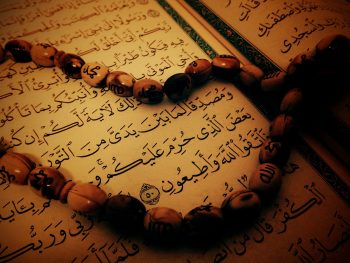Arabic adjectives for colours: rules of agreement Posted by Hanan Ben Nafa on May 10, 2017 in Arabic Language, Grammar

In this post, we’ll be looking at feminine noun phrases and point out an important feature, that is, adjectives need to agree with the nouns they come after and modify, in terms of many grammatical features, but gender is what we’re focusing on today. So, it’s not enough that a learner knows whether a noun is feminine or not, but they also need to remember to use or formulate the adjective in the correct way, using the correct marker.
Nouns in Arabic, as you probably already know, are either masculine or feminine. Unlike masculine nouns, feminine ones have specific and clear feminine markers (affixes). There are exceptions to this as there are some irregular feminine nouns, which have no marker or ones that are originally feminine, but we won’t go through this here.
The three main feminine markers are:
- Feminine taa’ ـة
تاء التأنيث
Taa’ at-ta’neeth
This marker has two forms:
- ـة
as in the feminine version جميلة jameel-ah of the masculine adjective جميل jameel
or
- ة
as in the feminine version بعيدة of the masculine adjective: بعيد
It’s important to mention though that the letter taa’ ـة ة is not pronounced as the sound /at/ but actually as /a/ or /ah/, unless in the case of addition when something is to be said afterwards.
The second marker is:
- Shortened feminine ‘alif ـى
ألف التأنيث المقصورة
Alif at-ta’neeth al-maqsour-a
It sounds as /aa/. For example:
مسألة صغرى
Mas’al-ah sughr-aa
(Small issue)
The second marker is:
- Extended feminine alif ـاء اء
ألف التأنيث الممدودة
Alif at-ta’neeth al-mamdoud-a
It sounds as /aa’/. For example:
سماء زرقاء
Sama-aa’ zarq-aa’
(blue sky)
Now, one would imagine that if the marker ta is used in the nouns, this means that the adjective would bear the same marker, for instance:
هذه حديقــة جميلــة
Haathihi hadeeq-ah jameel-ah
This is a beautiful park
Formulating a feminine adjective here is as simple as adding the feminine marker (the feminine taa’) ـة to the ned of the masculine adjective جميل beautiful
جميل + ـة = جميلة
but it isn’t always as straightforward as this (you can see this problem in example, 2 above). To illustrate this, let’s look at this example below:
هذه حديقــة خضراء
Haathihi hadeeq-ah khadr – aa’
(This is a green park)
Formulating a feminine adjective that refers to a colour is slightly different. The marker (feminine taa’) is not used here, but the extended (feminine alif) is, instead. The right adjective form to be used here is:
خضراء
Khadra-aa’
And not
أخضره
Akhdar-ah
Which you will get if you simply add the feminine taa’ to the masculine adjective
أخضر + ة = أخضره
This is particularly the case with adjectives for colours. However, some of these adjectives can be formulated using ‘ـاء’ such as:
حمراء
red
خضراء
green
زرقـاء
blue
And some are formulated using ‘ـة’
بنفسجيــة
purple
برتقاليــة
orange
If anything, this shows how important it is to make sure you use the right feminine marker when it comes to adjectives.

Build vocabulary, practice pronunciation, and more with Transparent Language Online. Available anytime, anywhere, on any device.



